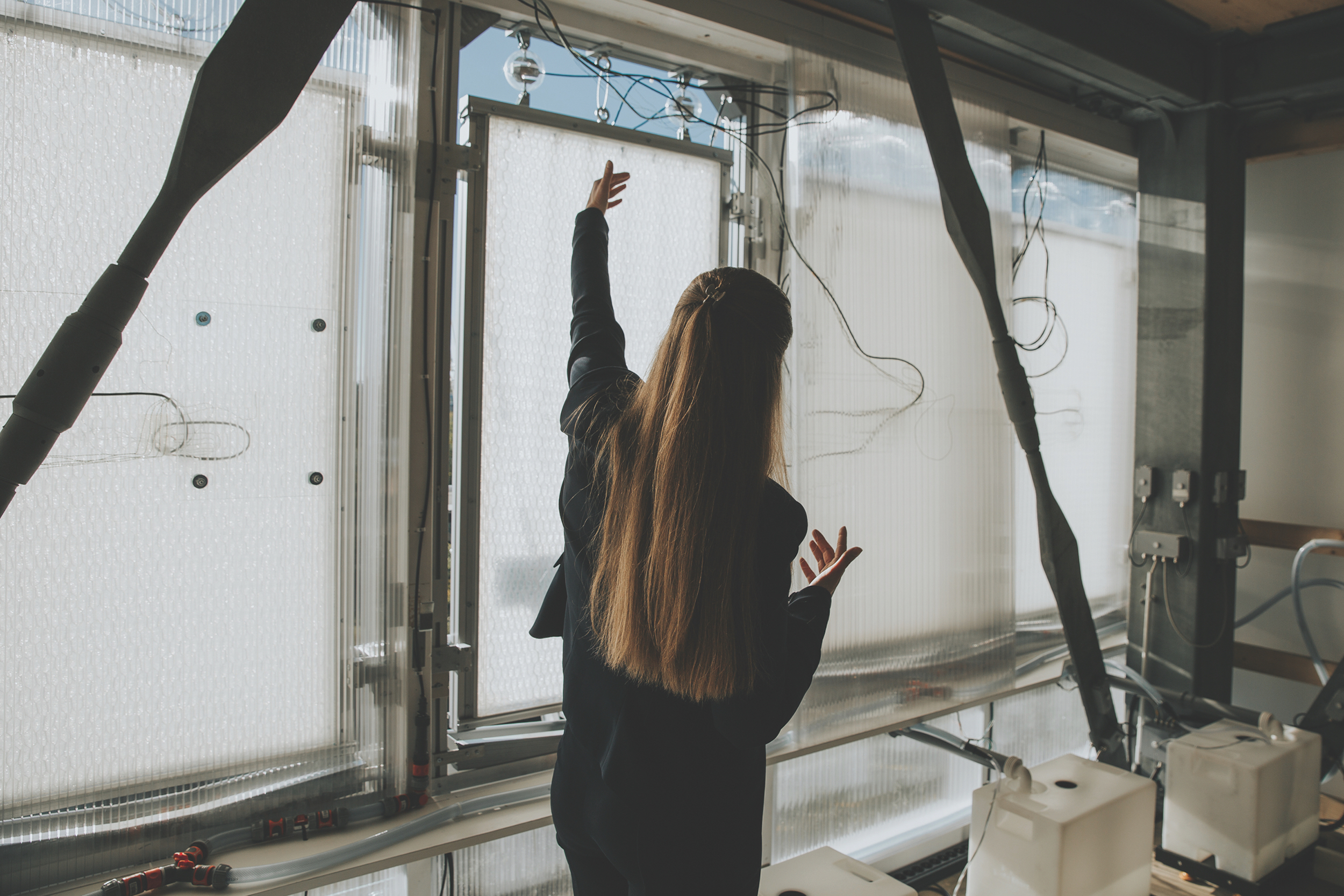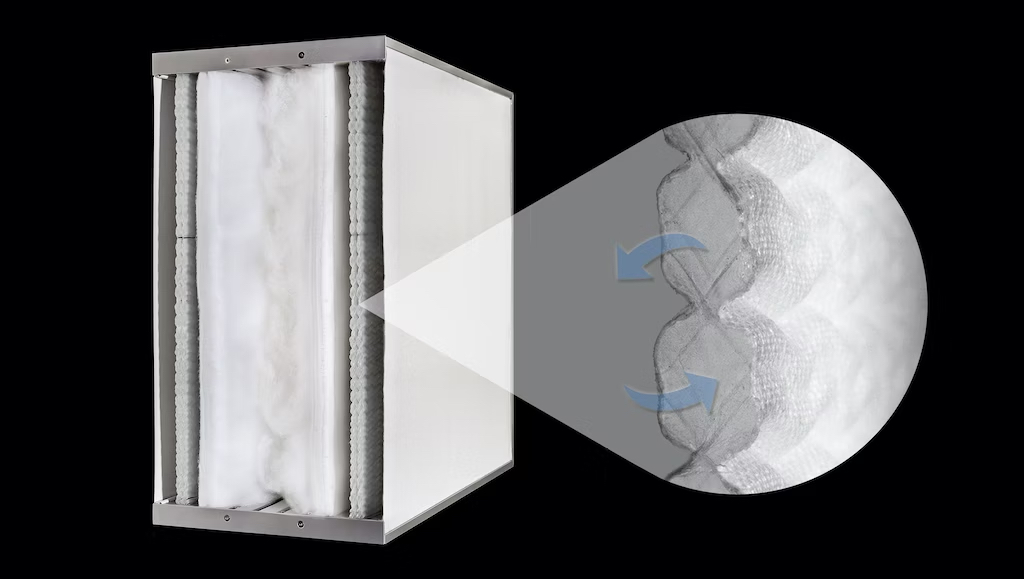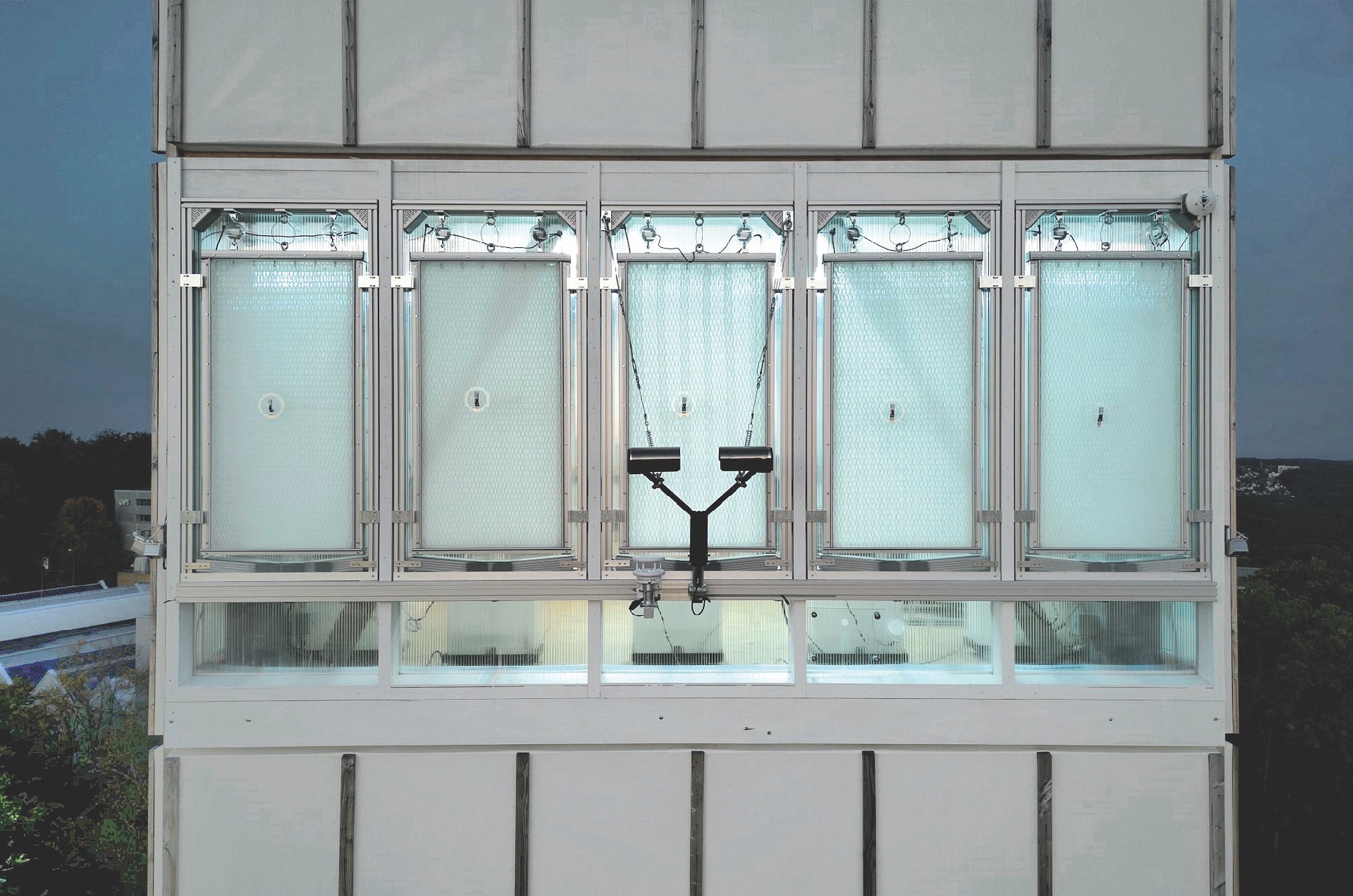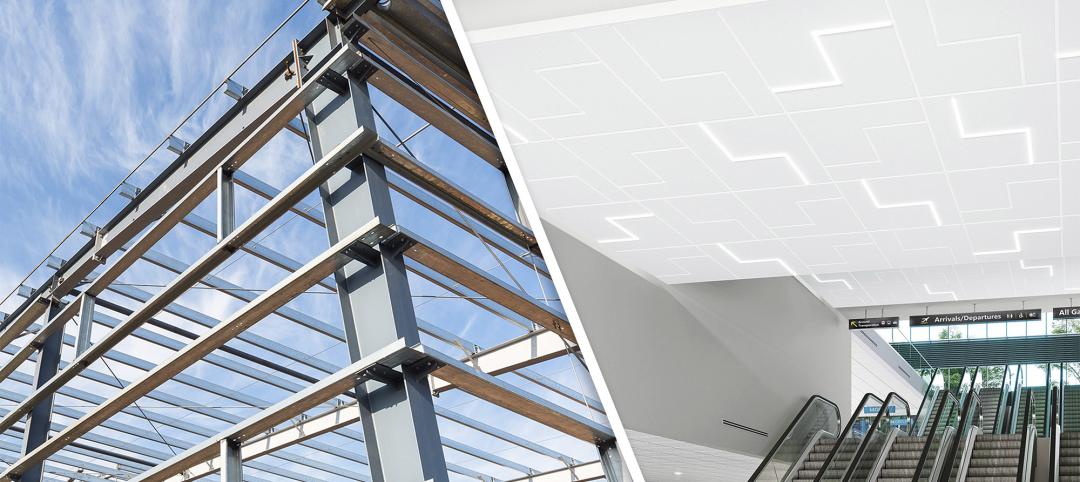Global urbanization and densification are giving rise to new thinking about how design can lower the impact of buildings on the heating of the planet. This is particularly true of high-rise buildings with glass façades that get scalding hot and generate heat islands. On buildings and other sealed surfaces, only about 10% of any rainwater that hits them evaporates; the rest of that precipitation typically ends up running into sewer systems in volumes that increasingly are leading to flooding.
One design and engineering solution to these problems is being explored at the University of Stuttgart in Germany, where researchers last October presented what they claim is the first hydroactive façade that moderates the temperature of exterior walls and interiors of buildings by absorbing rainwater that the system releases on hot days for evaporative cooling.
“It’s a milestone in the adaptation of the built environment to the urgent challenges of our time,” proclaims Christina Eisenbarth, a Research Assistant at the university’s Institute of Lightweight Structures and Conceptual Design (ILEK), and the façade’s inventor.
Dubbed HydroSKIN, the façade consists of an external, multilayered 3D textile that acts as a water collector and evaporator. Here’s how it works, according to research abstracts that ILEK released last fall:
- Its first layer is a water-permeable mesh or knitted fabric facing the outside that lets water in and filters out impurities and insects.
- A second inner layer is a water-transporting spacer fabric whose pile threads mobilize incoming and outgoing water and provide an open porous structure with a large surface area for air circulation and facilitating evaporation.
- A third layer can be integrated into the system to optimize water storage and evaporation performance. A water-bearing fourth layer, which might be a foil, is on the inside and provides water drainage and collection.

The layers are assembled by a force fit and are fixed into a frame profile by means of a waterproof Keder fabric.
The thickness of the textile- and film-based envelope system can vary between 20 and 60 mm, depending on environmental conditions and performance requirements. Depending on wind-driven rain yields, the depth of the frame profile’s water supply and discharge conduits might range from 50 to 100 mm.
HydroSKIN is well suited for high-rise buildings
Researchers have tested their concept in the lab and on buildings in Stuttgart and Singapore. At press time Eisenbarth was in Australia preparing to test HydroSKIN on buildings in Sydney.
The findings so far support the efficiency of the façade and its potential for high-rise buildings. For example, research found that above building heights of 29 meters, the total square-meter-related wind-driven-rain (WDR) yields striking a façade surface exceeded vertically falling precipitation yields per square meter. In other words, more rain can be absorbed by the façade than by a roof surface of the same size, and this disparity becomes even more pronounced at higher elevations.
In lab tests, researchers demonstrated a temperature reduction of about 10 degrees due to the effects of evaporation via HydroSKIN. Initial measurements last September on the world’s first adaptive high-rise building, at the University of Stuttgart’s Vaihingen campus, “suggest the cooling potential is even significantly higher,” says Eisenbarth.

Last year, a prototype installation and meteorological evaluation of five different HydroSKIN prototypes was conducted on the 10th level of this 12-floor, 36.5-meter campus high-rise. In 2023, there will be further testing of HydroSKIN on the building’s 9th level in combination with a unitized glass façade that will integrate textile insulation and other functional layers into the system.
BD+C was unable to ascertain how close HydroSKIN is to becoming commercially viable. (The results from the testing in Australia should be ready sometime this summer, says Dr. Walter Haase, ILEK’s Managing Director and Head of Working Groups.) But it is ILEK’s contention that this system could be retrofitted onto any façade surface of new or existing buildings.

For one thing, its mass—between one kilogram per square meter dry to five kg/sm saturated—compares favorably to other façade infill materials such as cellular concrete (~150 kg/sm), wood-panel construction (~125 kg/sm), thermal insulation composite systems (~63 kg/sm), or even triple glazing (~45 kg/sm). In addition, HydroSKIN is designed to be aesthetically unobtrusive, and its layers are framed in a profile that allows for easy disassembly and recycling of all components.
While HydroSKIN’s long-term suitability has yet to be proven, ILEK has manufacturers lined up to make it, says Eisenbarth.
Related Stories
Brick and Masonry | Oct 7, 2024
A journey through masonry reclad litigation
This blog post by Walter P Moore's Mallory Buckley, RRO, PE, BECxP + CxA+BE, and Bob Hancock, MBA, JD, of Munsch Hardt Kopf & Harr PC, explains the importance of documentation, correspondence between parties, and supporting the claims for a Plaintiff-party, while facilitating continuous use of the facility, on construction litigation projects.
Products and Materials | Sep 30, 2024
Top building products for September 2024
BD+C Editors break down September's top 15 building products, from the Crystal W50i to Armstrong's DesignStackz Ceiling System.
Products and Materials | Aug 31, 2024
Top building products for August 2024
BD+C Editors break down August's top 15 building products, from waterproof wall panel systems to portable indoor pickleball surface solutions.
Curtain Wall | Aug 15, 2024
7 steps to investigating curtain wall leaks
It is common for significant curtain wall leakage to involve multiple variables. Therefore, a comprehensive multi-faceted investigation is required to determine the origin of leakage, according to building enclosure consultants Richard Aeck and John A. Rudisill with Rimkus.
Products and Materials | Jul 31, 2024
Top building products for July 2024
BD+C Editors break down July's top 15 building products, from Façades by Design to Schweiss Doors's Strap Latch bifold door.
Smart Buildings | Jul 25, 2024
A Swiss startup devises an intelligent photovoltaic façade that tracks and moves with the sun
Zurich Soft Robotics says Solskin can reduce building energy consumption by up to 80% while producing up to 40% more electricity than comparable façade systems.
Products and Materials | Jun 30, 2024
Top products from AIA 2024
This month, Building Design+Construction editors are bringing you the top products displayed at the 2024 AIA Conference on Architecture & Design. Nearly 550 building product manufacturers showcased their products—here are 17 that caught our eye.
Building Technology | Jun 18, 2024
Could ‘smart’ building facades heat and cool buildings?
A promising research project looks at the possibilities for thermoelectric systems to thermally condition buildings, writes Mahsa Farid Mohajer, Sustainable Building Analyst with Stantec.
Products and Materials | May 31, 2024
Top building products for May 2024
BD+C Editors break down May's top 15 building products, from Durat and CaraGreen's Durat Plus to Zurn Siphonic Roof Drains.
Codes and Standards | Apr 30, 2024
Updated document details methods of testing fenestration for exterior walls
The Fenestration and Glazing Industry Alliance (FGIA) updated a document serving a recommended practice for determining test methodology for laboratory and field testing of exterior wall systems. The document pertains to products covered by an AAMA standard such as curtain walls, storefronts, window walls, and sloped glazing. AAMA 501-24, Methods of Test for Exterior Walls was last updated in 2015.

















